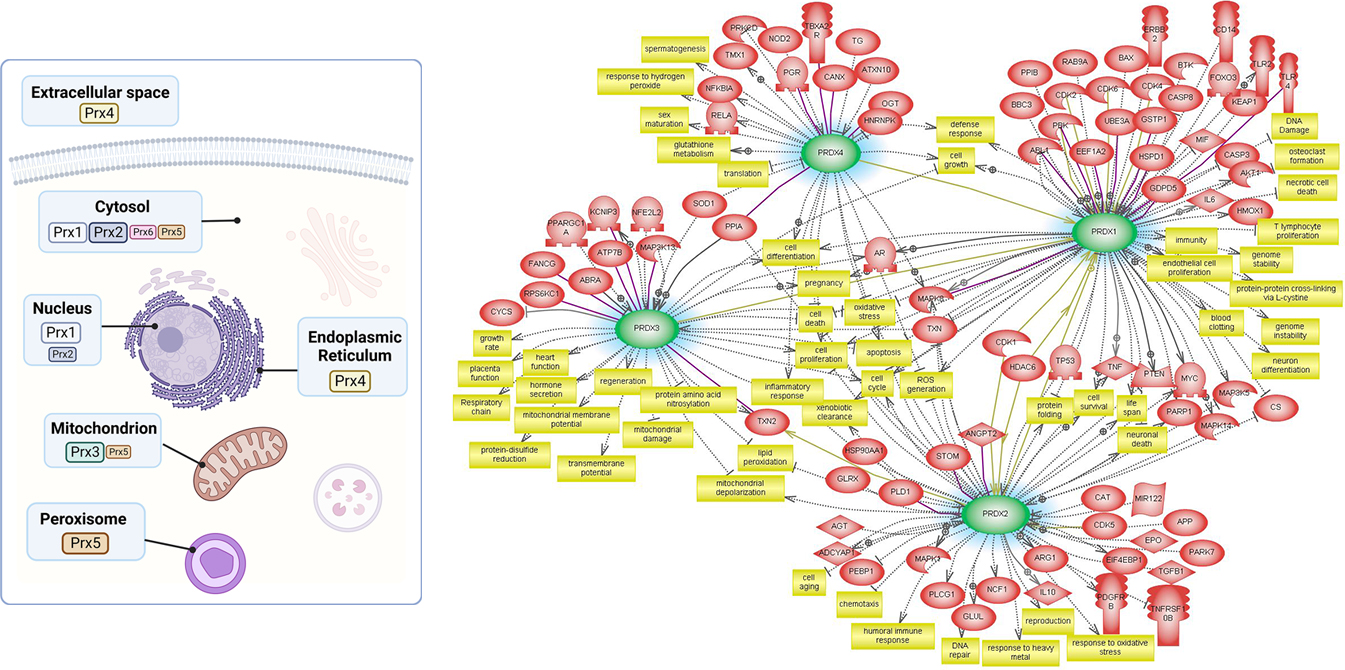Science

 Science
Science Background
Background
Background
Novel Thiol Peroxidase Family "Peroxiredoxin"
Peroxiredoxin (Prx, gene locus Prdx) plays a pivotal role in regulating the local concentrations of H2O2 within the cytosol and subcellular compartments.
Peroxiredoxin family consists of six isomers (Prx1 ~ Prx6), distributed across both extracellular and intracellular spaces including the cytosol, endoplasmic reticulum, lysosome, peroxisome, mitochondrion, and nucleus.
Major Prx isoforms serve as key nodes in the functional protein interactomes.

Classification of Peroxiredoxin Deficiency Syndrome (PDS)
In multiple chronic diseases, peroxiredoxin isoforms may undergo inactivation through post-translational modification or be epigenetically suppressed.
Such deficiencies in peroxiredoxin can lead to cell damage, hyperplasia, dysfunction, lipid accumulation, and protein misfolding, all exacerbated by increased oxidative stress.

Molecular bases of Peroxiredoxin Deficiency Syndrome (PDS)
H2O2-mediated signaling: H2O2 is a novel second messenger in various receptor-mediated signaling.
In normal physiological processes, the activation of various receptors initiates the production of intracellular hydrogen peroxide (H2O2), serving as a key second messenger in intracellular signal transduction pathway. This novel H2O2-mediated signaling mechanism induces the oxidation of cysteine thiol residues on target proteins, leading to conformational changes that impact protein-protein interaction and activities. Following the signal transmission, H2O2 is efficiently eliminated by Prx enzymes through a coupled reaction.
Peroxiredoxin is a key H2O2 regulator, and its deficiency can lead to abnormal signaling.
In diseased states such as inflammation, oxidative stress contributes to the inactivation of Prx enzymes, exacerbating oxidative damage to macromolecules, including the overoxidation of signaling proteins. Consequently, this abnormal overoxidation consequence leads to tissue hyperplasia, dysfunction and damage. Abnormal H2O2 levels can be effectively managed by substituting inactive Prx enzymes with stable chemical compounds and, consequently, restore normal cellular function. Our journey in drug development begins with this innovative redox signaling approach.



 TOP
TOP